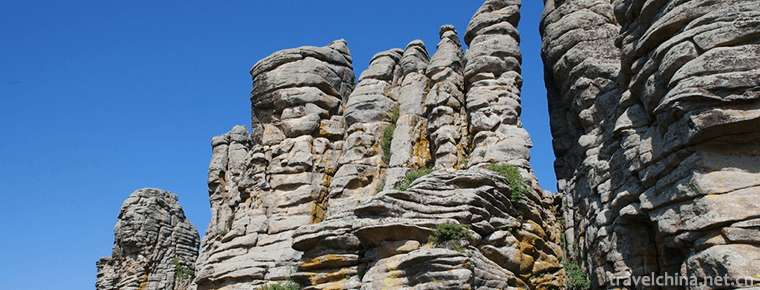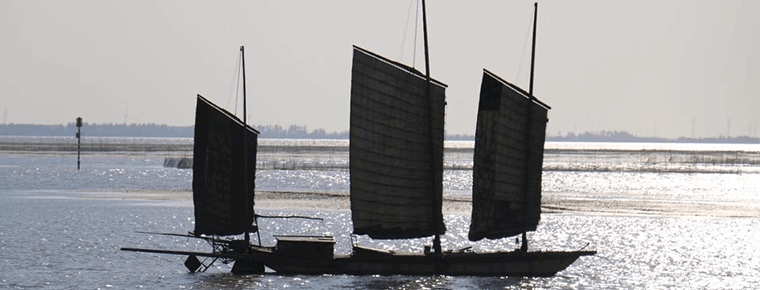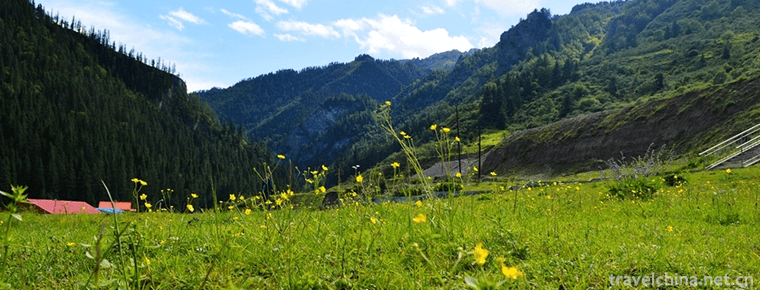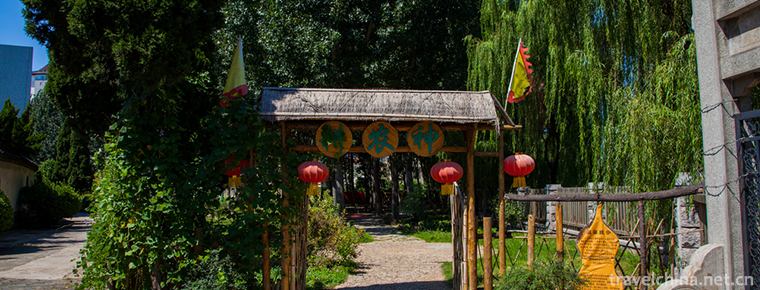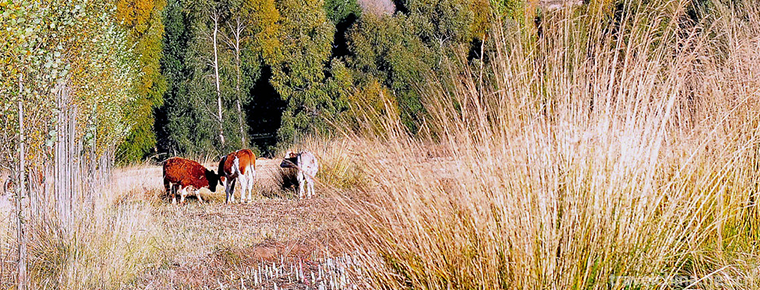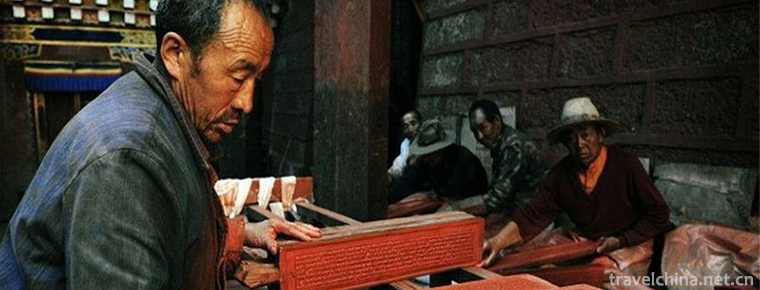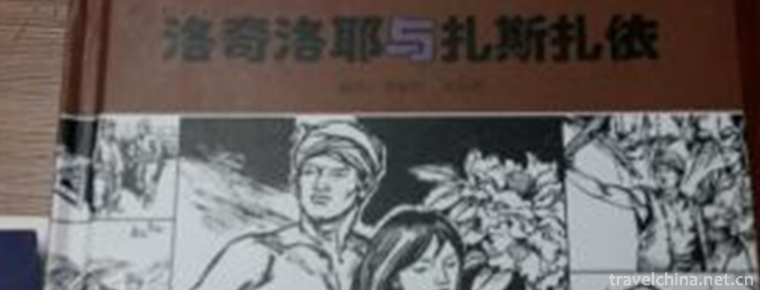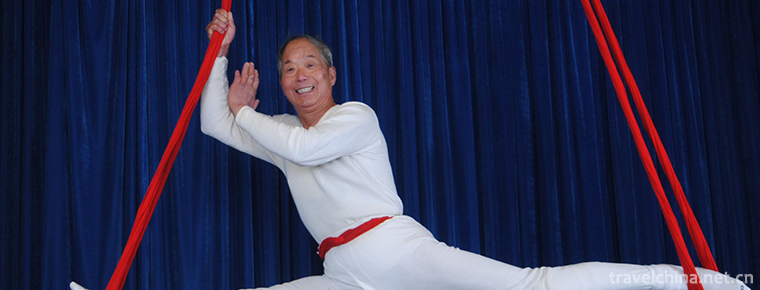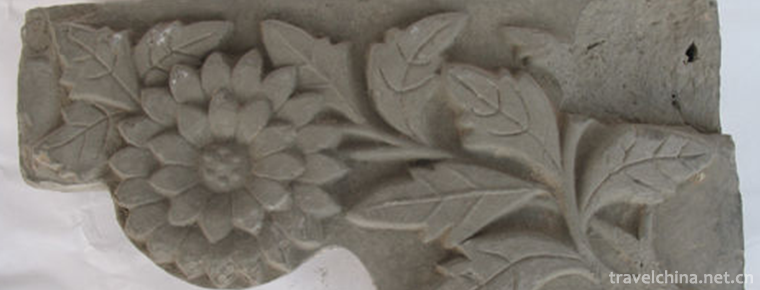Loba Costume
Loba Costume
Clothing custom is an important manifestation of human material and spiritual cultural life, with a long history. The Loba people live in dozens of rivers and valleys in the vast Loba area, which are more than 300 kilometers apart from north and south, about 1000 kilometers long from East and west, from tropical to temperate zone, from plain to mountainous area. Due to the difference of regional climate factors and different acceptance of external influences, there are differences in dress forms, although different genders and ages have different dress forms, colors and decorations. Demand.
A prominent feature of Loba costumes is to make full use of wild plant fibers and animal skins as raw materials. Loba women like to wear flax-woven, collarless, narrow-sleeved jacket with a calf skin on the outside, a tight skirt slightly above the knees on the lower body, legs wrapped around, both ends tied with straps. They attach great importance to wearing decorations, in addition to silver and copper bracelets, rings, there are dozens of circles of blue and white bead necklaces, waist clothes are decorated with a lot of seashells string into the ball.
On June 7, 2008, Loba costumes were approved by the State Council to be included in the second batch of national intangible cultural heritage list.
Historical evolution
"The Loba people have long lived in plateau canyons of more than 1,000 kilometers from east to west, from plain to mountain areas. Influenced by geographical and climatic factors, they have left their mark rooted in production and life style and worship traditional nature in clothing culture." As a native Loba, Wei Jianyong, director of the Wenguang Bureau of Milin County, said.
In the long-term collection activities, Loba people learned to extract fibers from some unique wild plants, remove the colloids, and then rub them into threads to form raw materials for weaving. Mammoth fur, leather and bone are widely used in material, which not only shows the Loba people's admiration and yearning for strength and bravery, but also has high practicability. For example, men's bearskin hat helmet, in addition to the role of cold, bearskin hat is extremely tough, knife can not break, can prevent sharp injuries to the body.
Wei Jianyong said that with the continuous improvement of productivity and aesthetic concepts, Loba people gradually learned to further process natural materials. On the basis of satisfying practical needs, we strive to make our clothes develop in the direction of beauty, and improve the color, material and accessories of men's and women's clothes to meet the aesthetic needs.
"Rich color selection and totem design are influenced by nature worship to varying degrees. Many myths of the Loba people talk about heaven, father, earth and mother nurturing all things in the world. Therefore, people will paint the image of the sun in red on their clothes. The abstraction of animals and plants is widely used in jewelry design, such as bracelets engraved with snake heads and bird patterns. Wei Jianyong said. The clothing of the Loba nationality has gone through the development process from simple to complex, from practical to beautiful.
In the northern mountainous areas of Lou-Yu, men wear self-woven terra-white jackets in summer, long sleeves, large pairs of flaps, two cloths buckled on the right, and self-woven striped shorts underneath; in winter, they wear clothes purchased from Tibet or self-made buffalo hide drapes. Women wear summer jackets with pattern and white shorts underneath; in winter, they wear a rectangular shawl with a round mouth in the middle. The man hangs a small curved knife and a sickle on his right waist, and a sharp knife is tied across his waist. Men and women have a lot of silver decorations. Every festival, wear all the silver. Belt is quite exquisite, wide four fingers, there are various patterns, dragon, snake is indispensable, five colors, hanging beads, copper bells, shells, go out when a pleasant sound. Men and women barefoot all the year round, cocoon thick thorns do not penetrate. Rich men and women wear silver bracelets and silver necklaces. People wear only rattan bracelets for sweat shaving. Both men and women wear rings of golden and silver rattan to show wealth and poverty. Men go out with strong bows, arrows on their backs, long knives on their waists and bearskin caps, which are quite powerful. In the hinterland and south of Rongyu, traffic is blocked, clothes still retain the old style, the form of clothes is very simple, men and women wear white sweatshirts in summer, bare most of the body, winter wear short-sleeved collarless jacket. Many villages of Donggong tribe, such as Guobu and Riga, are known as land writers. Men use self-woven cloth with a width of one foot and a length of three feet to cover their ugliness, but they can see their genitals at any time, and they use white thread to wrap around their Turtleheads to avoid evil. Several tribal men covered their shadows with grass, brown hair and animal skins, while women covered their ugliness with a cloth, and their upper bodies were open-minded. Minrong and other tribal men use bamboo tube or gourd to cover their penis. This phenomenon is not at all surprising to the Loba people who adore male genitals. In the eastern part of the Louyu Mountains, men wear placketless jackets and red-green shorts. Women wear clothes with two buckles, with flower cloth around the waist to hide ugliness, and brown hair to hide ugliness. Men wear large silver earrings, usually only wear three strings, each string of 20 beads. Also wearing lead earrings, married women regard this as the most beautiful.
Clothing features
Loba men and women like to wear ornaments. Men wear bracelets, bamboo earrings, necklaces, bows and arrows, long knives and so on. Women especially like to wear colorful beads. Sometimes, women in full dress wear dozens of beads on their necks, along with bracelets, earrings, copper bells, silver coins, chains, knives, sickles, seashells and other accessories. They weigh more than ten kilograms and can be filled with a bamboo basket. They are regarded as indispensable dowry for family wealth. Every time the festival comes, women dress up, dance and sing to each other.
Men's wear
Loba costumes are mostly made of goat hair. Men's wear is made of two pieces of narrow strips of finished cloth, which are in the shape of a long blanket. A foot or so of joints are left in the middle without sewing the neckline. When they are worn, they cover their heads and tie their belts to form a suit without collars, front skirts and back seams.
The men's clothes fully show the characteristics of hunting life in the mountains and forests. They often wear black sheath shoulders made of wool, long and abdominal. Put a buffalo hide on your back and tie it to your shoulders with a leather strap. Inside is a Tibetan-style bat robe. Bogar tribe men's hats are unique, with bearskin pressed into a round, similar to a steel helmet with edges. Above the eaves of the hat is a furry bear skin ring, with its fur spreading all around. A square bear skin is also attached to the back of the hat. The bearskin cap is very tough and can be used to confuse prey when hunting. Men usually go out with bows and arrows on their backs, waist knives on their backs, tall bodies and other shiny ornaments, which make them particularly powerful and handsome.
Wearing long knives is a hobby of Loba men. It is not only an ornament to show masculinity, but also driven by natural conditions. It has become a basic tool and an important weapon in daily life. It is not only used to prevent the attack of wild animals and poisonous insects, but also used to cut bamboo, build rattan bridges, build houses, even cut hair, cut animal skins... In addition to the long knife, bows and arrows are the main tools of hunting, which can not be separated from men of the Loba nationality. The Loba people are very skilled in making bows and arrows, and they are very skilled in using bows and arrows. The Loba people have been practicing archery since childhood. It is very particular about bending bamboo bows and cutting arrows. In bow making, not only bamboo species and age should be selected, but also the length and thickness of the bow should be specified. The selection and manufacture of arrow poles, arrow dryers and arrow feathers are also very sophisticated. It takes about 20 days to make a good bow and arrow.
Women's wear
The Loba women's clothes are made of cotton cloth. They have been improved in color, material and accessories. On the basis of maintaining national characteristics, the Loba women's clothes are more beautiful and generous, which satisfies the needs of Loba people for beauty.
Loba women like to wear flax-woven, collarless, narrow-sleeved jacket with a calf skin on the outside, a tight skirt slightly above the knees on the lower body, legs wrapped around, both ends tied with straps. They attach great importance to wearing decorations, in addition to silver and copper bracelets, rings, there are dozens of circles of blue and white bead necklaces, waist clothes are decorated with a lot of seashells string into the ball. The ornaments of Loba women can weigh up to several kilograms and can be filled with a small bamboo basket. These decorations are the exchange income of each family for many years, and are the symbol of family wealth.
The ornaments of Loba women can weigh up to several kilograms and can be filled with a small bamboo basket. These decorations are the exchange income of each family for many years, and are the symbol of family wealth. Every festival, women dress up and compare with each other.
Hair ornament
The hair styles of the Loba nationality are varied. Some tribes have short hair; some have long hair and loose clothes, women's braids hanging behind their shoulders; some men and women have long hair, hair on the top of their heads, wearing a bamboo stick; the tropics are all bald. There are bowler hats, bathroom hats, rattan hats, bearskin hats, two sides of the hat fixed with a wild boar tusk, some tribes are also inserting a number of bird feathers on the hat, very beautiful.
Mourning clothes
The Loba people attach great importance to mourning clothes. Close relatives or distant relatives should not wear furry clothes to prevent the deceased from regenerating into livestock. Most mourning clothes are white to show the innocence of the deceased.
Hunting suit
Hunter's clothing has its own characteristics, showing the characteristics of the Loba people's hunting production. The animal skin shawl is light and warm, water-tight and moisture-resistant. Wear a bear skin cap to shield you from snow and rain. The upper and sole of the footwear "Limu" (boots) are all made of "Anu" (Daphne bark) fiber, which is several times stronger than modern rubber shoes. A healthy man has been hunting for 40 years or so in his life. Four pairs of "limu" are enough to wear. The knife and sickle are indispensable tools for hunting. The sheath made of yellow sheepskin is not easy to penetrate. Veterinary leather shorts, soft and warm. The clothes that hunters wear when hunting are inseparable from animal skins, which fully shows that one of the objects on which this nation depends for survival is wild animals.
Cultural connotations
The ancestors of the Loba nationality believed that they had a mysterious relationship with some animals, plants, inanimate and tools used in nature, and regarded them as their ancestors, so ancestor worship came into being. Located in high mountains and valleys, the Loba people worship mountain gods very much. In their view, the mountains and cliffs are all Wuyou (spirits and gods). Ghosts, demons, etc. are collectively called "Wuyou". The reclusive places, the plants growing on the mountains and the animals resting in the woods are under the jurisdiction of Wuyou. To deify and worship animals is the product of primitive people's economic life of fishing and hunting. Animals are people's dependent objects for survival, but some of them are in opposition to human beings. For example, tigers, lions, snakes, wolves and other natural attributes, which directly threaten people's safety and cause people's fear, are endowed with supernatural mysterious power. Some people often pray that they use unlimited power to subdue other gods and ghosts that endanger people's safety. Therefore, people's sacrifices and taboos to venomous snakes and beasts are more frequent and complex. Bracelets engraved with snake heads and snake bodies, clothes woven with bats and birds, waistbands woven with wool in various colored field cases, etc., are also regarded as body shoveling charms in addition to their practical and decorative functions, which are used to suppress evil spirits and avoid evil spirits.
Inheritance and innovation
"The Loba costumes we see have very strong national characteristics. They are the crystallization of the wisdom of the people of Loba, the expression of the aesthetic characteristics of the Loba people, and the epitome of the development of the social form of the Loba people." Li Huiyan, Vice Minister of Propaganda Department of Milin County Committee, said.
The clothing culture of the Loba nationality is an artistic treasure in the Chinese national culture. The traditional concepts and cultural psychology of the Loba people, such as aesthetic ideas, religious beliefs and customs, have been interpreted in their costumes for thousands of years. Because the Loba people have only language and no written language, the clothing of the Loba people is like a wordless heavenly book recording the history of the Loba people in the process of inheritance and development, which plays an important role in the study of the history and culture of the Loba people. At the same time, as an integral part of Tibet's clothing culture, Loba's clothing culture, together with Menba's clothing culture and Dai's clothing culture, has created a unique clothing culture in the cloth area.
Wei Xiaohong, a Tibetan folklore scholar, said: "The composition, materials and crafts of cloth clothing show the rich and colorful cultural connotations, aesthetic concepts and social customs of cloth clothing areas. With the gradual strengthening of the exchange between the Gongbu area and the region, the Gongbu clothing culture represented by the Loba clothing will be further enriched and developed with the input of the state, the efforts of the inheritors and the benign development of the market.
The inheritance of Loba ethnic costume has encountered many difficulties when it was just appraised as the national intangible cultural heritage. Yayi said: "At that time, there were few masters of traditional skills, many skills could not reach the past level; Loba costumes were mostly made of precious animal fur, which faced the problem of substitution. In addition, according to the tradition of the people, clothes are buried before death, so the samples of clothes preserved are very scarce.
protective measures
In order to protect and inherit the traditional culture of the Loba people, Linzhi City invited experts from the Department of Non-Heritage of the Ministry of Culture to guide the protection work. In 2014, the relevant departments also invested 8 million yuan to support the local construction of "Loba Weaving Institute". In 2015, Caizhaocun Loba Weaving Technology was awarded "National Demonstration Base for Productive Protection of Intangible Cultural Heritage".
In July 2015, the construction project of clothing protection and utilization facilities for Loba people in Linzhi City started in Zhenba Village, Linzhi Town, Bayi District. The total investment of the project is 8 million yuan (state investment). The construction includes newly built productive protection plant and auxiliary facilities, with a total floor area of 2,000 square meters. The project was completed and put into operation in early 2016.

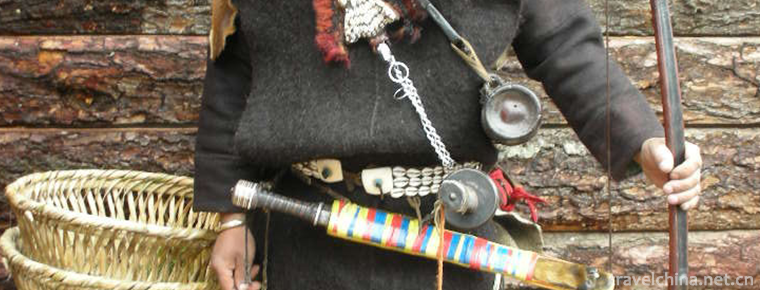
-
Ashatu Stonehenge Tourist Area Chifeng City Inner Mongolia Autonomous Region
Ashatu Stonehenge Tourist Area, Chifeng City, Inner Mongolia Autonomous Region Keshkten Stone Matrix (formerly Ashatu Stone Forest) is located in Keshkten Banner of Chifeng City.
Views: 191 Time 2018-12-02 -
Beijing Hangzhou Grand Canal
Beijing-Hangzhou Grand Canal is the longest and largest ancient canal in the world. It is also one of the oldest canals. It is called three great projects in ancient China together with the Great Wall.
Views: 148 Time 2018-12-22 -
Dayugou Scenic Area
Dayugou Scenic Area is located in Dayugou, Muer Township, Zhuoni County, Gannan Tibetan Autonomous Prefecture. It is 12 kilometers away from the county seat and has a total area of 105214.6 hectares..
Views: 163 Time 2019-01-07 -
Six Arts City of Confucius in Qufu
Confucius Liuyi City is located at No. 15 Chunqiu Road, Nanxin District, Qufu City, Jining City, Shandong Province. It is constructed by means of modern high-tech technology.
Views: 210 Time 2019-02-07 -
Yanzhi Mountain Forest Park
Yanzhi Mountain Forest Park is located 45 kilometers southeast of Shandan County. The Gejunma Grassland is opposite to Qilian Mountain.
Views: 103 Time 2019-02-28 -
Tibetan Engraving and Printing Techniques
Tibetan engraving and printing skills of Dege Printing Institute, local traditional handicraft skills of Dege County, Sichuan Province, and one of the national intangible cultural heritages..
Views: 357 Time 2019-04-05 -
Construction Techniques of Hakka Tulou
Hakka Tulou building construction technology, Fujian Longyan City Nanjing County, Huaan County local traditional building construction technology, one of the national intangible cultural heritage..
Views: 138 Time 2019-05-09 -
Lodgeroye and Zaszai
Lodgeroye and Zaszai is a representative long poem of Hani poetry style, which is widely spread in all villages inhabited by Hani Biyo people in Hani Autonomous County of Mojiang. There are ten chapte.
Views: 168 Time 2019-05-15 -
Mianzhu Wood Engraving New Year Picture
Mianzhu New Year Picture, also known as Mianzhu Wood Printing New Year Picture, is one of the Chinese Folk Woodcut New Year Pictures. It is named for Mianzhu City, Sichuan Province.
Views: 66 Time 2019-06-04 -
Shangdang Erhuang
Pihuangqiang in Shangdang area is called Shangdang Erhuang. It is an independent opera with a history of more than 200 years. Locals call it "Tu Erhuang". At present, Shangdang Erhuang is on.
Views: 177 Time 2019-06-13 -
Adjustment and suspension
Lifting is a unique folk sports event in Shaoxing City, Zhejiang Province. Appeared in the middle and late Qing Dynasty, the tuning and hanging actors were named "tuning and hanging" because.
Views: 90 Time 2019-06-21 -
Brick and plastic
Brick sculpture is the handicraft of folk craftsmen. It is made of mud into various animal models. Some of the images are realistic, but more are romantic and exaggerated ways of expression, the shape.
Views: 130 Time 2019-08-10
